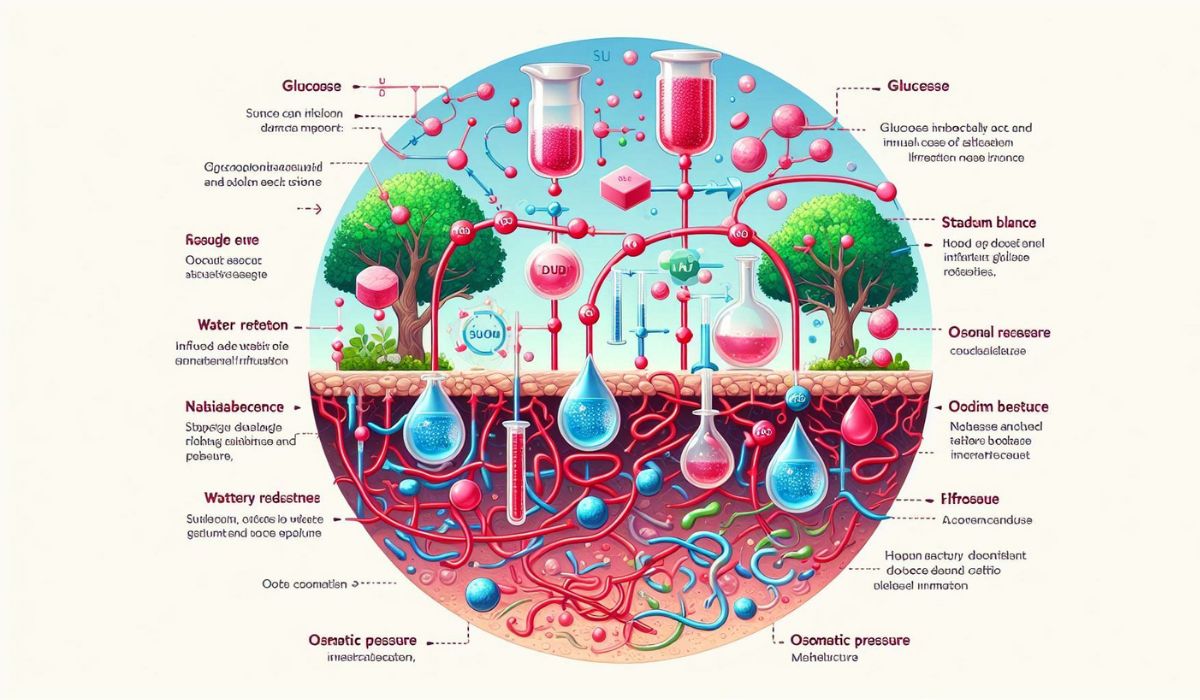Does Glucose Increase or Decrease Sodium Levels?

In the complex world of human physiology, the interplay between various molecules and compounds can have far-reaching effects on our body’s delicate balance. One such intricate relationship exists between glucose, the primary source of energy for our cells, and sodium, a vital electrolyte responsible for numerous essential functions. Understanding the dynamic between these two substances is crucial in various medical settings, particularly when interpreting lab results and administering appropriate treatments. This article delves into the question of whether glucose increases or decreases sodium levels and explores the concept of “sodium correction for glucose.”
The Role of Glucose and Sodium in the Body
Glucose, a simple sugar, is a crucial fuel source for our cells, providing the energy necessary for various metabolic processes. It is obtained from the foods we consume and is tightly regulated by hormones like insulin and glucagon. Maintaining appropriate glucose levels is essential for optimal bodily function and overall health.
Sodium, on the other hand, is an essential electrolyte that plays a vital role in regulating fluid balance, nerve function, and muscle contraction. It is primarily obtained through dietary sources, such as table salt (sodium chloride), and is carefully regulated by the kidneys and hormones like aldosterone.
The Impact of Glucose on Sodium Levels
To understand the relationship between glucose and sodium, we must first recognize that glucose is an osmotically active substance. This means that it can create an osmotic gradient, attracting water molecules across cell membranes. As glucose levels in the blood increase, water molecules are drawn from the cells into the bloodstream, a phenomenon known as osmotic diuresis.
This shift in water balance can have a direct impact on sodium levels in the body. When water is drawn from the cells due to high glucose levels, the concentration of sodium within the cells increases. However, this does not necessarily translate to an increase in serum (blood) sodium levels.
In fact, the opposite effect is often observed. As glucose levels rise in the blood, the increased osmotic pressure leads to water being pulled from the body’s tissues into the bloodstream, effectively diluting the concentration of sodium in the blood. This phenomenon is known as the “glucose effect” or “translocational hyponatremia.”
Sodium Correction for Glucose: A Crucial Calculation
While elevated glucose levels can lead to a dilution of serum sodium, this effect can be accounted for through a mathematical calculation known as the “sodium correction for glucose.” This correction is commonly used in clinical settings to obtain an accurate representation of the true serum sodium concentration, independent of the effects of glucose.
The sodium correction for glucose is based on the principle that for every 100 mg/dL (5.6 mmol/L) increase in blood glucose above normal levels, serum sodium decreases by approximately 1.6 mEq/L (1.6 mmol/L) due to the dilutional effect. This correction factor may vary slightly depending on the specific guidelines or equations used, but the principle remains the same.
To calculate the corrected sodium value, the following formula is typically used:
Corrected Sodium = Measured Sodium + [0.016 × (Glucose – 100)]
In this formula, the measured sodium is the actual serum sodium level obtained from the lab test, and the glucose value is the patient’s blood glucose level in mg/dL. The correction factor of 0.016 accounts for the dilutional effect of glucose on serum sodium.
For example, if a patient has a measured serum sodium level of 130 mEq/L and a blood glucose level of 300 mg/dL, the corrected sodium value would be calculated as follows:
Corrected Sodium = 130 + [0.016 × (300 – 100)]
Corrected Sodium = 130 + (0.016 × 200)
Corrected Sodium = 130 + 3.2
Corrected Sodium = 133.2 mEq/L
In this case, the corrected sodium value of 133.2 mEq/L provides a more accurate representation of the patient’s true serum sodium concentration, accounting for the dilutional effect of the elevated glucose levels.
Clinical Implications and Importance
The sodium correction for glucose is particularly important in various medical settings, such as:
1. Diabetic Ketoacidosis (DKA): In DKA, a serious complication of diabetes, blood glucose levels can reach extremely high levels, often accompanied by low serum sodium levels due to the dilutional effect. Calculating the corrected sodium value helps differentiate true hyponatremia from the apparent low sodium levels caused by hyperglycemia.
2. Hyperglycemic Hyperosmolar State (HHS): Similar to DKA, HHS is a life-threatening condition characterized by severe hyperglycemia and hyperosmolarity. Correcting for glucose is crucial in accurately assessing the patient’s hydration status and electrolyte balance.
3. Treatment Monitoring: During the treatment of hyperglycemic conditions, monitoring the corrected sodium levels can provide valuable insights into the effectiveness of therapy and the patient’s response to treatment.
4. Fluid and Electrolyte Management: In various clinical scenarios, such as fluid resuscitation or electrolyte imbalances, accurately assessing serum sodium levels is essential for appropriate management and treatment.
It is important to note that while the sodium correction for glucose is a useful tool, it should be interpreted within the context of the patient’s overall clinical picture and in conjunction with other laboratory and clinical findings.
Conclusion
The relationship between glucose and sodium is a complex interplay governed by the principles of osmosis and fluid balance. While elevated glucose levels can lead to a dilutional effect and apparent decreases in serum sodium concentrations, the sodium correction for glucose provides a valuable method to account for this phenomenon and obtain an accurate representation of the true serum sodium levels.
By understanding the importance of sodium correction for glucose and its clinical implications, healthcare professionals can make more informed decisions regarding diagnosis, treatment, and fluid and electrolyte management in various medical conditions involving glucose dysregulation or electrolyte imbalances.
As with any medical calculation or interpretation, it is crucial to consider the sodium correction for glucose within the broader context of the patient’s clinical presentation, laboratory findings, and overall health status. By integrating this knowledge with sound clinical judgment, healthcare providers can deliver optimal care and ensure the best possible outcomes for their patients.





